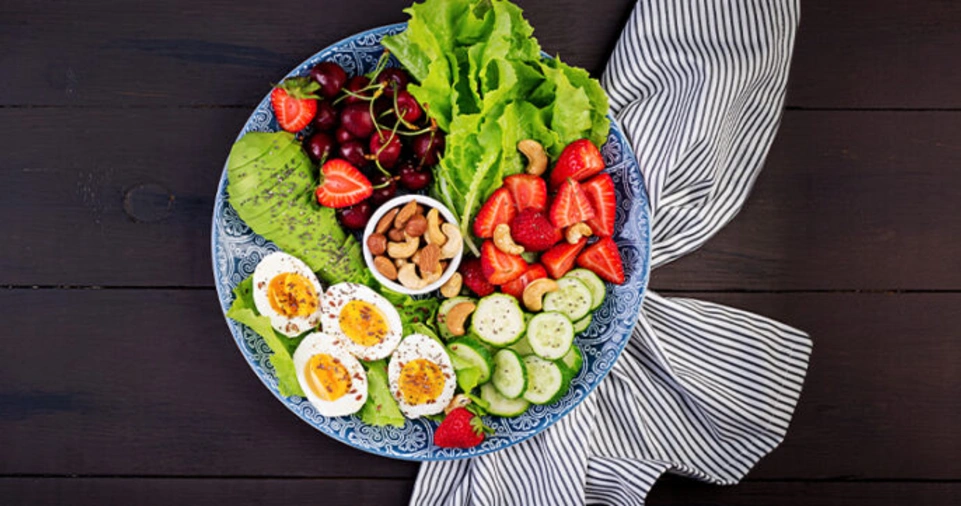Creating a balanced meal plan is essential for maintaining good health, sustaining energy levels, and managing weight. A well-designed meal plan ensures you’re getting the right amounts of macronutrients (carbohydrates, proteins, and fats), micronutrients (vitamins and minerals), and fiber.
In this guide, we’ll walk through the steps to create a balanced meal plan, explore relevant topics, and provide practical tools to help you stay on track.
Why a Balanced Meal Plan Matters
A balanced meal plan offers numerous benefits:
- Supports overall health and immune function
- Helps maintain a healthy weight
- Improves digestion and gut health
- Stabilizes blood sugar levels
- Enhances energy and mood
When your meals are balanced, your body functions better. You reduce the risk of chronic diseases such as heart disease, diabetes, and obesity.
Step-by-Step Guide to Creating a Balanced Meal Plan

Step 1: Assess Your Caloric Needs
Your daily calorie needs depend on factors such as age, gender, activity level, and health goals. Use an online calculator or consult with a registered dietitian to estimate your Total Daily Energy Expenditure (TDEE).
| Age Group | Sedentary (cal/day) | Active (cal/day) |
|---|---|---|
| Children (4-8) | 1,200 – 1,400 | 1,400 – 1,800 |
| Teens (14-18) | 1,800 – 2,400 | 2,400 – 3,200 |
| Adults (19-30) | 2,000 – 2,400 | 2,400 – 3,000 |
| Adults (31-50) | 1,800 – 2,200 | 2,200 – 3,000 |
| Seniors (50+) | 1,600 – 2,000 | 2,000 – 2,800 |
Step 2: Understand Macronutrient Distribution
Aim for the following macronutrient ratio:
- Carbohydrates: 45-65% of daily calories
- Proteins: 10-35% of daily calories
- Fats: 20-35% of daily calories
Balance is key. Avoid cutting out entire macronutrient groups unless medically advised.
Step 3: Choose Whole Foods
Focus on whole, minimally processed foods:
- Whole grains (brown rice, quinoa, oats)
- Lean proteins (chicken, tofu, fish, legumes)
- Healthy fats (avocado, nuts, olive oil)
- Fresh fruits and vegetables (aim for color variety)
Step 4: Plan Meals Around the Plate Method
Divide your plate as follows:
- 50% vegetables and fruits
- 25% whole grains
- 25% lean protein
- Add a small amount of healthy fat
This approach ensures nutrient diversity and portion control.
Step 5: Incorporate Snacks Wisely
Snacks can be part of a balanced plan. Choose nutrient-dense options:
- Greek yogurt with berries
- Apple slices with peanut butter
- Hummus and veggie sticks
- Hard-boiled eggs
Step 6: Stay Hydrated
Water is vital for digestion, nutrient absorption, and overall function. Aim for at least 8 cups (64 oz) of water per day, more if you’re active.
Additional Topics to Strengthen Your Meal Plan
Meal Prep and Batch Cooking
Preparing meals ahead of time helps maintain consistency. Cook in batches and portion meals into containers to save time and reduce the temptation to eat out.
Seasonal and Local Eating
Choose seasonal produce for better taste and nutrition. Supporting local farms ensures freshness and sustainability.
Reading Food Labels
Understand ingredient lists and nutrition facts to make informed choices. Look out for added sugars, sodium, and unhealthy fats.
Special Diet Considerations
Adapt your meal plan based on specific dietary needs:
- Vegetarian/Vegan: Focus on plant-based proteins and B12 sources
- Gluten-Free: Use alternatives like rice, quinoa, and certified GF oats
- Low-Carb/Keto: Increase healthy fats and proteins, limit carbs
Cultural and Family Preferences
Incorporate foods and flavors that align with your culture and family traditions. Balanced eating doesn’t mean sacrificing taste or identity.
Smart Shopping Strategies
Plan your grocery list in categories:
- Produce
- Proteins
- Grains
- Dairy alternatives
- Pantry staples
Avoid impulse buys by shopping after eating and sticking to your list.
Sample 1-Day Balanced Meal Plan
| Meal | Foods Included |
|---|---|
| Breakfast | Oatmeal with almond milk, chia seeds, and blueberries |
| Snack | Carrot sticks with hummus |
| Lunch | Grilled chicken salad with mixed greens and vinaigrette |
| Snack | Handful of almonds and an apple |
| Dinner | Baked salmon, quinoa, steamed broccoli |
| Hydration | Water with lemon, herbal tea throughout the day |
Common Pitfalls and How to Avoid Them

| Pitfall | Solution |
|---|---|
| Skipping meals | Schedule regular meal times |
| Overeating at night | Eat balanced meals during the day |
| Relying on processed foods | Prep meals in advance and stock healthy staples |
| Lack of variety | Try new recipes and rotate ingredients weekly |
| Ignoring portion sizes | Use measuring tools and follow serving recommendations |
Conclusion
Creating a balanced meal plan isn’t about restriction; it’s about making thoughtful choices that support your health and lifestyle. With proper planning, variety, and a focus on whole foods, you can develop habits that last. Keep it practical, personalize where needed, and revisit your plan periodically to adjust as your needs change. Remember, consistency beats perfection.
Balanced eating is a cornerstone of wellness. Start simple, stay consistent, and build a foundation for long-term health success.







